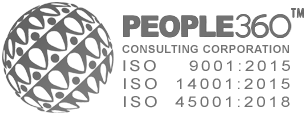By S. S. Suarez
Perhaps you have already heard of visual management. Visual management is ”an approach to managing product, people and processes using low-cost, easy to understand visual devices. These devices, when properly utilized, will quickly and effectively communicate objectives, performance, operating conditions and problems.”(source: www.ksmartin.com)
Visual management tools are very apparent in companies implementing Lean manufacturing. Sometimes called Lean enterprise or Lean production, it is a management philosophy derived mostly from the Toyota Production System (TPS) or Toyotism. Its objective is to eliminate the seven “muda” or wastes to improve overall management performance and customer value. Hence, the ultimate goal is to reduce costs by eliminating these wastes. These seven wastes are Defects, Overproduction, Transportation, Waiting, Inventory, Motion and Over Processing. I will gladly discuss these seven wastes on another day.
I have first-hand experience in implementing visual management and Lean concepts in a warehouse setting. And we are talking not only of a simple warehouse operations but a 3-hectare covered distribution center (DC).
Gone are the days when warehouse operation is just about storage. Today, managing a warehouse has become a sophisticated operation. Operating a DC of such enormous size requires operational efficiency in terms of warehouse and inventory management. You must have ability to synchronize physical goods flows and data flows with high level of accuracy.
We measure almost everything. From the time we booked the customer orders, when the trucks arrived in the DC up to the delivery of the shipment to the costumer , you name it. We are a believer to what the modern management theorist Peter Drucker said, “What you cannot measure, you cannot manage.”
We define our Key Performance Indicators (KPIs) in five Key Performance Areas (KRAs) namely Quality, Cost, Speed, People and Safety. It is a tedious and meticulous exercise. Commitment is second to none. We measure our throughput and update our KPI charts on a daily basis every shift. Hence the desired improvement results can be instant.
For Safety KPIs, our target is not just Zero accident. We define and measure our safety KPIs that will ensure that we achieve zero accident. For example, one of our safety targets is 100% safety inspection. We also measure the quality of safety inspection reports. We also set a target for the number of Behavior-based safety inspection and near miss report per staff. The number of training hours per employee related to safety is also measured. By measuring the throughput rather than the output, we are able to achieve our ultimate goal of zero accident.
These Safety KPIs are then placed in charts that are displayed in all meeting rooms and strategic bulletin boards so that everyone can see and be reminded of their KPIs. Once they miss their daily targets, the staff immediately take corrective action. For our warehouse personnel, time is gold. This is visual management in action.
Aside from KPIs, visual management can be applied in promoting safety rules. Pedestrian lanes, footprints of tools, machines and racks are examples of such. The list includes safety boards that communicate safety performance records, work instructions, visual production controls that monitor production schedule and maintenance schedule and visual quality controls that monitor signals for machines. The use of strobe lights or flashlights in mobile equipment, traffic and directional signs, evacuation lay-outs are also examples of visual management in safety.
The success of visual management to drive safety performance depends on management commitment and people involvement. The people on the shopfloor should be involved in the development of their KPIs and procedures. When they are part of the planning process, they embrace the KPIs. Measurable safety KPIs in full display to everyone would be easier to manage and will help you achieve the desired safety performance.

